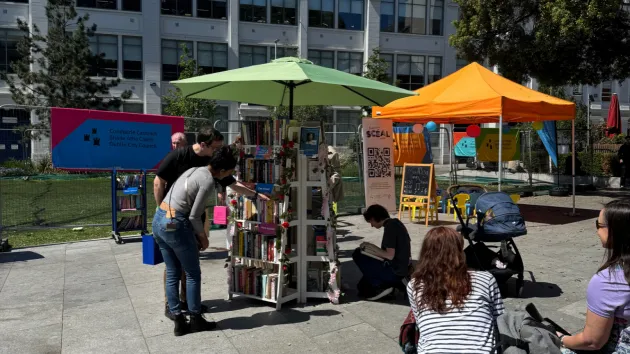Ardmhéara Bhaile Átha Cliath / Lord Mayor of Dublin Mícheál Mac Donncha will officially launch a new exhibition Jacob’s Biscuit Factory & Dublin: An Assorted History, today, Friday, 8 September at 1pm in Dublin City Library and Archive.Drawing on the vast 330 boxes of Jacob Biscuit Factory Archives held at Dublin City Library, and using beautifully illustrated panels, oral histories, flags and original artefacts, the exhibition tells both a chronological and thematic history of Jacob’s Biscuit Factory. The events of 1913-1922 which impacted on Ireland nationally feature prominently and using the lens of the factory allows the exhibition to provide a unique contribution to the Decade of Commemorations. The exhibition also tells more broadly the impact of Jacob’s on social, cultural and political life in Ireland throughout the twentieth century. It includes an impressive time-line showing the changing faces of Jacob’s biscuit labels throughout the decades, and original artefacts such as a locked recipe books, an ‘Irish Free State’ Biscuit tin, employee welfare booklets, and a truncheon used during the 1913 Lock-out alongside with a letter from Trade Union leader Jim Larkin. Visitors will find out about the fascinating history of the Jacobs cream-cracker, who was the marketing genius to develop the concept of Jim Figgerty, and how did major national and international events from 1916 Rising to both World Wars impact the business, customers, and staff.Speaking ahead of the launch, Árdmhéara Mícheál Mac Donncha said “Thousands of Dubliners have a personal connection to Jacob’s whether through family members working there or simply a life-time of enjoying their wonderful selection of familiar products. This colourful exhibition focuses on the history of the factory, the workers, the biscuits it produced and its impact on Irish life in the twentieth century. I encourage everyone to take a nostalgic trip down memory lane & visit this tasty exhibition. Molaim an taispeántas seo do phobal na cathrach agus cuairteoirí.”Margaret Hayes Dublin City Librarian said “This exhibition is the realisation of a journey made possible by a generous donation of company records from Valeo Foods, the Jacobs brand owner, together with a lifetime of committed collecting by Douglas Appleyard. This material was then professionally transformed by the Dublin City Archive team into an accessible archival legacy rich in story and image. Dublin City Council is proud to fund this exhibition through its Decade of Commemorations fund.”The exhibition will be on display at Dublin City Library and Archive, 138-144 Pearse Street, Dublin 2 from Friday 8 September to 28 October 2017. Opening hours are Monday - Thursday 10am-8pm & Friday-Saturday 10am-5pm. Free guided tours are also available every Tuesday morning throughout September & October: Booking required via jacobs-exhib-guided-tour.eventbrite.ieMembers of the public are encouraged to contact Dublin City Library and Archives (DCLA) @dclareadingroom using #jacobsassorted if they have Jacob’s memorabilia which they would like to add to the archive or to share their favourite labels or memories of Jacob’s.In particular DCLA are gathering stories of the after-life of Jacob’s biscuit tins. What did you keep in the tin or box, once all the biscuits were eaten? For example that spare parts for the first Aer Lingus plane Iolar were carried in a Jacob’s tin!See Also: The Changing Face of Jacob's Biscuits Image Gallery.Further information:
[email protected]; 01 674 4997/4848About the Jacob ArchivesThe archives of W & R Jacob and Company were acquired by Dublin City Library and Archive in 2012. Comprising both the business archives donated by Valeo Foods and the Appleyard Collection donated by Douglas Appleyard, the 330 boxes contain a wide range of corporate records, relating to over 150 years of biscuit making in Dublin.This archive represents a rich and significant contribution to the study of business and commercial life in Dublin in the late 19th and 20th centuries. It also offers valuable information about life in the community of over three thousand Dublin workers, mostly women, who were engaged at any given time during most ofthe company’s manufacturing period. Following a major cataloguing and preservation project, the collection was opened for public access in the Reading Room of Dublin City Library and Archive in 2016.History of the companyThe Company’s Dublin connections originated on 29th June 1851, when it rented premises at 5 and 6 Peters Row, Dublin, on the corner of Bishop street. This building occupies a unique position in Irish history as it was seized and occupied by Irish Volunteers during Easter week 1916, as part of the armed insurrection against British rule in Ireland. In 1975, W & R Jacob’s manufacturing operations moved to a new purpose built factory in the Dublin suburb of Tallaght, where it remained until the factory closed in 2009. The Jacobs brand lives on today in Ireland via Valeo Foods.

